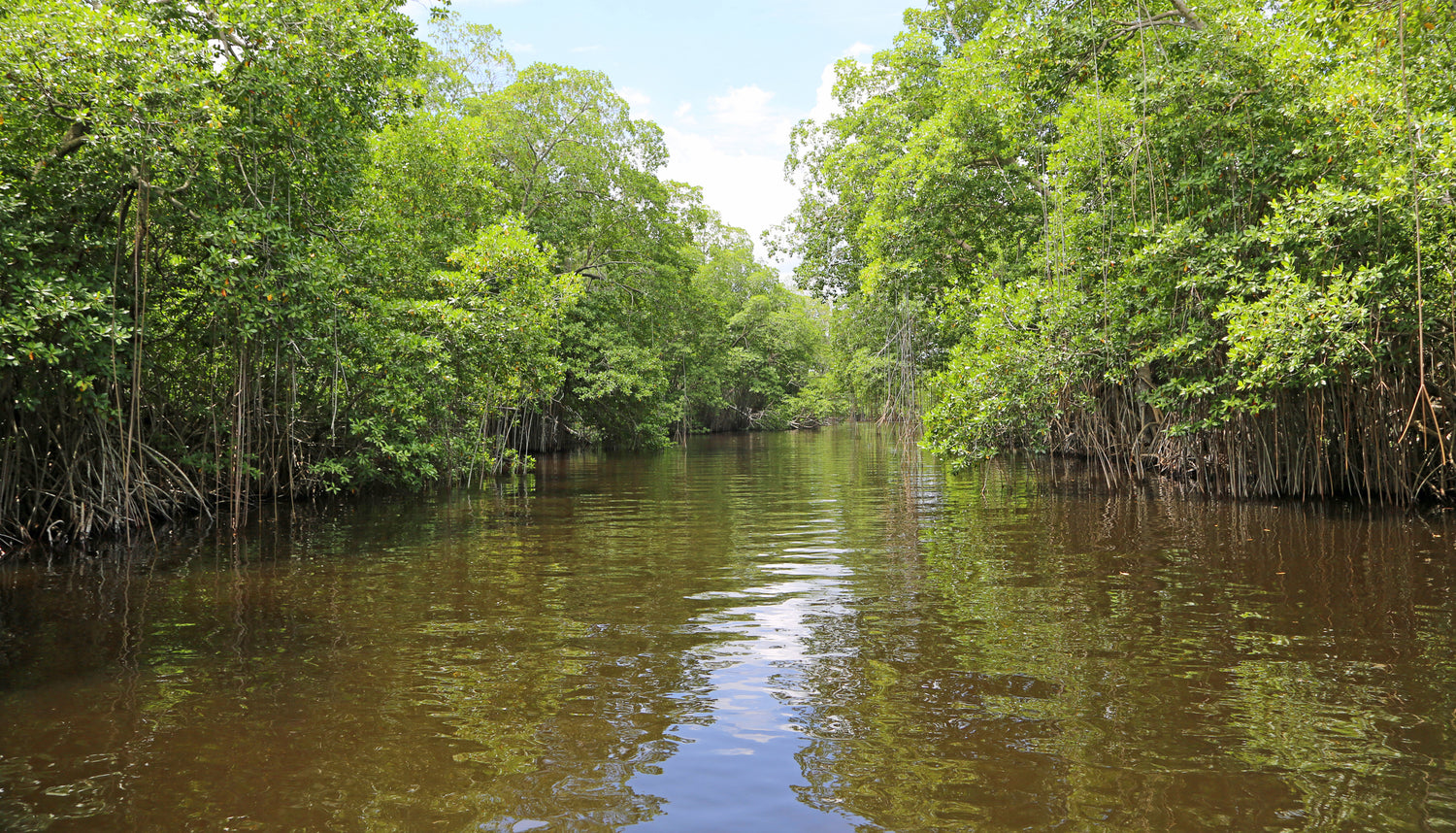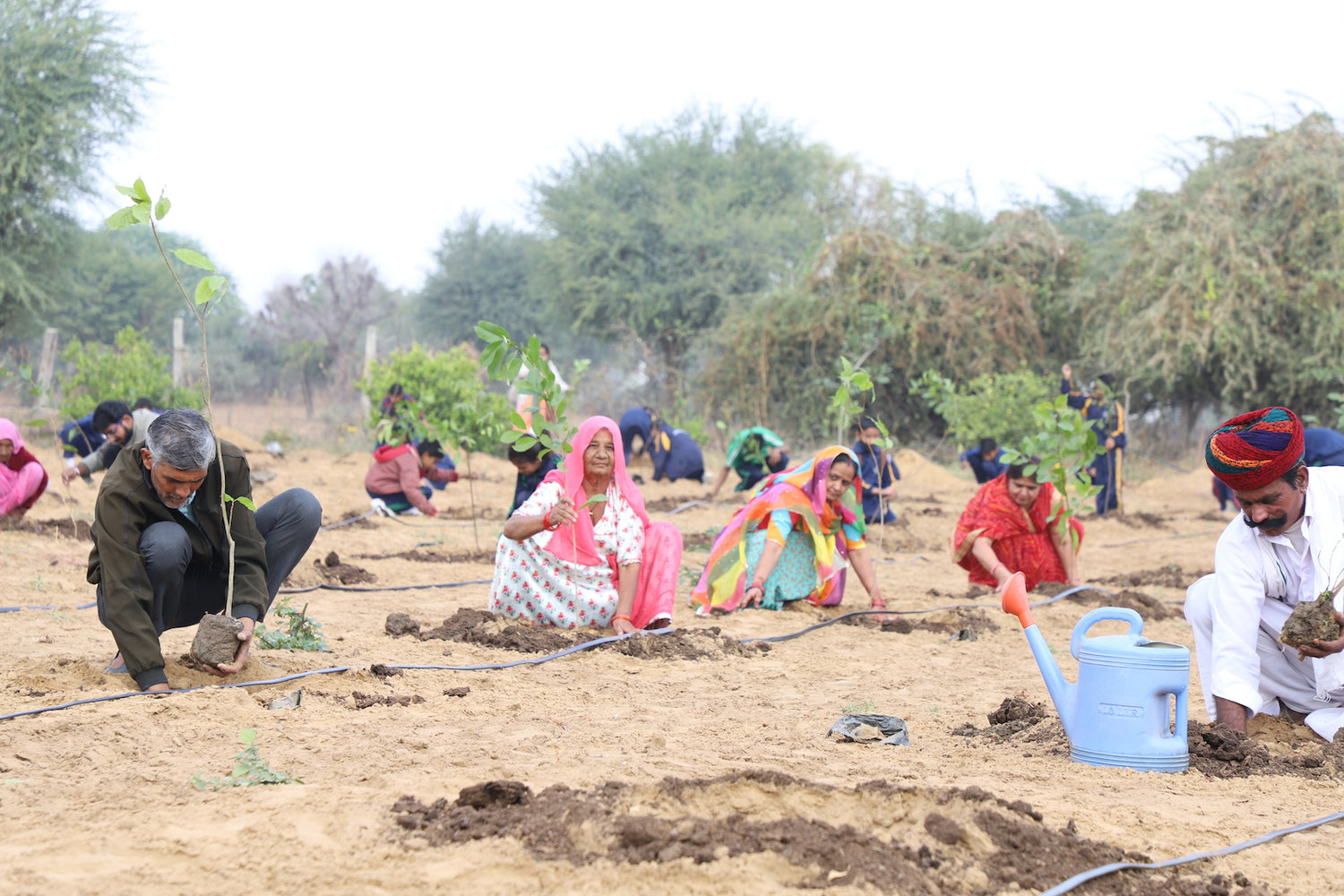Mangroves in Karnataka: Estuaries of Kali, Sharavathi, and Nethravathi
Mangroves in Karnataka, primarily found in the estuaries of the Kali, Sharavathi, and Nethravathi rivers, are vital for coastal resilience, biodiversi Read more
Connect with us
-
👥 Corporates
If you are looking for:
- 🌲 Tree Plantation Events
- 📊 CSR Projects
📧 corporate@growbilliontrees.com
📞 +91 9699723523
💬 +91 9325931304 WhatsApp (Only)
🕒 Mon - Sat | 10am - 7pm IST
-
🧩 Tree Plantation NGOs
If you are looking for:
- 💰 Financial Assistance
- 🤝 Operational Support
📧 support@growbilliontrees.com
📞 +91 9699723523
💬 +91 9325931304 WhatsApp (Only)
🕒 Mon - Sat | 10am - 7pm IST
-
🌼 Individuals
If you are looking for:
- 👥 Group Tree Plantation Drive
- 🌳 Bulk Tree Plantation
📞 +91 9699723523
💬 +91 9325931304 WhatsApp (Only)
🕒 Mon - Sat | 10am - 7pm IST
Trending
Trees for Corporates
Mangroves in Karnataka: Estuaries of Kali, Sharavathi, and Nethravathi
Mangroves in Karnataka, primarily found in the estuaries of the Kali, Sharavathi, and Nethravathi rivers, are vital for coastal resilience, biodiversity, and local livelihoods.
These mangroves form unique ecosystems where saltwater and freshwater meet, creating rich habitats for marine and terrestrial life.
Despite their ecological significance, Karnataka’s mangroves are under-researched compared to those in other states, making conservation efforts essential.
Karnataka’s mangroves have historically supported coastal communities through fishing, agriculture, and forest produce.
Ancient records mention these estuarine ecosystems as critical resources for sustainable livelihoods. Traditional practices such as using mangrove timber for boat-building and medicinal purposes underscore their significance.
However, as urbanization expanded in the 20th century, these ecosystems faced degradation due to land conversion for agriculture, aquaculture, and infrastructure.
Mangroves in Karnataka are essential for maintaining ecological balance. Their dense root systems reduce soil erosion, buffer storm surges, and act as natural carbon sinks.
Studies show that mangroves store carbon up to four times more efficiently than tropical forests. Moreover, they serve as breeding grounds for fish, crabs, and shrimp, directly supporting Karnataka’s fisheries and aquaculture industries.
- Biodiversity Hotspot: The mangroves host species like mudskippers, kingfishers, and otters, making them a haven for wildlife enthusiasts and researchers.
- Cyclone Defense: Karnataka’s mangroves act as green shields, reducing the impact of storms and protecting inland areas from tidal surges.
- Natural Water Filters: Mangroves filter sediments and pollutants, maintaining the health of rivers like Kali, Sharavathi, and Nethravathi.
- Tourism Potential: The scenic beauty of mangrove forests, coupled with their ecological importance, attracts eco-tourists to Karnataka’s coastal regions.
Karnataka’s mangroves face several threats, including deforestation, pollution, and climate change. Conversion of mangrove land for agriculture and shrimp farming has resulted in habitat loss.
Rising sea levels and salinity intrusion due to global warming further endanger these ecosystems, highlighting the urgency for conservation efforts.
Grow Billion Trees is leading mangrove restoration and conservation efforts in Karnataka. By collaborating with local communities, governmental bodies, and research institutions, the organization ensures sustainable preservation of these critical ecosystems.
Collaborations:
- Partnering with Karnataka Forest Department and local NGOs to implement mangrove plantation projects.
- Engaging with academic institutions to monitor mangrove biodiversity and health.
Execution Strategies:
- Establishing nurseries for native mangrove species like Avicennia marina and Sonneratia alba.
- Conducting plantation drives in degraded areas of the Kali, Sharavathi, and Nethravathi estuaries.
- Leveraging drone technology and GIS mapping to monitor mangrove health and restoration progress.
Awareness Campaigns:
- Hosting workshops for local communities to emphasize mangrove conservation’s ecological and economic importance.
- Promoting sustainable fishing practices to reduce pressure on mangrove ecosystems.
- Highlighting mangrove conservation stories through social media and community events.
Kali River Mangrove Restoration: Grow Billion Trees has planted over 40,000 mangrove saplings in degraded areas along the Kali estuary, creating a thriving habitat for wildlife.
Community-Led Nurseries in Sharavathi: Local women’s groups are being trained to cultivate mangrove saplings, ensuring economic benefits while contributing to ecological restoration.
Eco-Tourism Promotion in Nethravathi: Partnering with tourism operators, Grow Billion Trees supports eco-friendly tours through mangrove areas, raising awareness and generating sustainable revenue.
By 2030, Karnataka’s mangroves have the potential to become a model for coastal ecosystem resilience, supporting biodiversity, mitigating climate change, and sustaining local livelihoods.
With concerted efforts, these ecosystems can expand to provide greater ecological, economic, and social benefits.
Karnataka’s mangroves, particularly in the estuaries of the Kali, Sharavathi, and Nethravathi rivers, are lifelines for the state’s coastal regions.
Their conservation is crucial for biodiversity, climate resilience, and sustainable development.
Grow Billion Trees is playing a pivotal role in preserving and restoring these ecosystems through community engagement, innovative strategies, and long-term partnerships.
With continued efforts, Karnataka’s mangroves will remain vibrant guardians of the state’s coastlines for generations to come.
Kali River Mangroves
These mangroves act as nature’s guardians along the Kali River, providing a safe haven for fish, birds, and crabs while protecting Karnataka’s coastlines from erosion and tidal waves.
Sharavathi River Mangroves
Nestled in Karnataka’s lush greenery, these mangroves are biodiversity hotspots where otters, mudskippers, and kingfishers coexist in perfect harmony, making them an ecological treasure.
Nethravathi River Mangroves
These mangroves are not just scenic wonders but also vital nurseries for aquatic life, supporting Karnataka’s fishing communities and adding a dash of green to the state’s coastal charm.
Mangroves as Carbon Sinks
Karnataka’s mangroves are climate warriors, storing carbon more effectively than most forests, helping the state reduce its carbon footprint one root at a time.
Biodiversity in Karnataka’s Mangroves
From playful otters to colorful kingfishers, Karnataka’s mangroves host a vibrant array of species, making them a paradise for nature lovers and conservationists.
Mangroves and Cyclone Protection
Acting as natural shields, Karnataka’s mangroves absorb the impact of tidal waves and storms, proving that the best defense is a strong green offense.
Water Purification by Mangroves
These mangroves act as natural filters, trapping pollutants and sediments, ensuring Karnataka’s rivers remain healthy and full of life.
Mangroves and Fisheries
Karnataka’s mangroves are nurseries for shrimp, crabs, and fish, directly supporting the state’s thriving seafood industry and the livelihoods of fishing communities.
Threats to Karnataka’s Mangroves
Urbanization, shrimp farming, and pollution are eroding these ecosystems, but conservation efforts aim to turn the tide in favor of the mangroves.
Grow Billion Trees in Karnataka
This initiative is restoring mangrove ecosystems in the Kali, Sharavathi, and Nethravathi estuaries, ensuring these green warriors continue to thrive.
Mangroves and Eco-Tourism in Karnataka
Offering serene boat rides and wildlife spotting, Karnataka’s mangroves are becoming a top eco-tourism destination that balances conservation with exploration.
Community Role in Mangrove Conservation
Local communities are the true heroes of Karnataka’s mangroves, partnering with Grow Billion Trees to protect these vital ecosystems while sustaining their livelihoods.
You may like
Corporate Plantations
FAQ
What are the mangroves in Karnataka?
Karnataka’s mangroves thrive in the estuaries of the Kali, Sharavathi, and Nethravathi rivers, acting as natural shields and biodiversity hotspots. Grow Billion Trees works to restore and protect these vital ecosystems.
Why are Karnataka’s mangroves important?
They prevent erosion, support fisheries, and store carbon, making them essential for coastal resilience. Grow Billion Trees promotes their restoration to safeguard these benefits.
How do mangroves protect against natural disasters?
Mangroves act as green shields, absorbing storm surges and protecting inland areas. Grow Billion Trees strengthens this protection by planting resilient mangrove species.
What wildlife is found in Karnataka’s mangroves?
Mudskippers, otters, and kingfishers thrive here, alongside marine species like crabs and shrimp. Grow Billion Trees ensures their habitats remain intact and thriving.
How do mangroves support Karnataka’s fisheries?
They serve as nurseries for aquatic life, boosting the state’s seafood industry. Grow Billion Trees restores mangrove habitats to sustain fisheries and livelihoods.
What threats do Karnataka’s mangroves face?
Urbanization, shrimp farming, and pollution threaten these ecosystems. Grow Billion Trees addresses these challenges through reforestation and awareness campaigns.
What is Grow Billion Trees doing for Karnataka’s mangroves?
We plant mangroves, engage local communities, and use technology to monitor and restore these ecosystems, ensuring their long-term health.
How do Karnataka’s mangroves combat climate change?
They store carbon more efficiently than most forests, making them climate heroes. Grow Billion Trees scales up mangrove plantations to maximize these benefits.
Why are Kali River mangroves significant?
These mangroves protect the coastline and support rich biodiversity. Grow Billion Trees actively restores degraded areas along the Kali estuary.
What makes Sharavathi River mangroves unique?
They are biodiversity hotspots hosting rare species like otters and mudskippers. Grow Billion Trees ensures their conservation for future generations.
How do Nethravathi mangroves benefit the region?
These mangroves nurture aquatic life and protect against erosion. Grow Billion Trees collaborates with communities to restore and protect this vital ecosystem.
Can communities help conserve Karnataka’s mangroves?
Absolutely! Local communities are essential to mangrove conservation. Grow Billion Trees empowers them with training and resources to lead sustainable restoration efforts.























